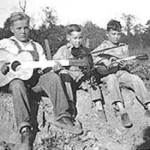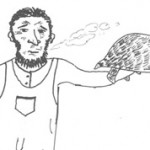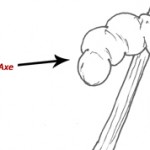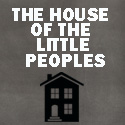By Stan Bargemeyer, Coma News Daily intern, Sometimes wears pants
Thirty years ago, the attraction now known as Trashtown National Historic Site in Coma was a train wreck.
Trashtown USA, as it was then known, was basically a junk yard of train parts that had fallen off as locomotives passing through Coma and trash that passengers dumped out windows but local organizers dreamed of much more.
They tried for years to raise local money to transform the space into a local collection of historic trash piles but failed to generate enough money to support its maintenance, much less pay for development and renovation.
Legislative Supermen
While organizers of the local site failed to spark visitors’ imaginations–despite arranging the trash in the shape of Theodore Roosevelt, for instance–they succeeded in attracting the attention of a few powerful men in Washington, D.C. In September 1986, U.S. Rep. Donald Dingleberries passed out in the junk yard after a three day bender and upon waking famously said “What fresh Hell is this?”
The visit had the effect Trashtown USA principals were hoping for, according to The Coma News Daily’s account of the visit. Rep. Dingleberries, a key figure in numerous federal porkbarrel schemes, knew how to spin trash into gold.
“During a later sober tour of the once-busy junk yard, Dingleberries suggested that the area may one day become a national park where the story of rail trash dumping in the United States will be told,” according to a Sept. 16, 1986, Coma News Daily story.
When Dingleberries requested operational specifications for improving “this steaming pile of opportunity” Trashtown General Manager John M. Shart Jr. wasted no time in getting that information to the congressman, telling Coma News Daily he was “working with Trashtown architects and operations people right now and hope to send the specifications to Congressman Dingleberries in Washington this afternoon,” the Sept. 16, 1986 article reported.
Mr. Dingleberries wasted no time after arriving back in Washington, D.C. Just days after his visit to Trashtown, the congressman introduced legislation to make Trashtown a national junk pile. A Sept. 23, 1986, Coma News article reported that U.S. Sen. Arlen “Angry Red” Weiner was expected to introduce a bill nearly identical to Mr. Dingleberries’.
Tramp Stamp of Approval
The same article noted “Both Weiner and Dingleberries hope Congress will put its stamp of approval on the plan before it adjourns, although Coma Mayor Buckey “Buck You” McMasters said today it will take a ‘Herculean boonedoggle’ to accomplish that goal.”
About $500 million in funding to turn Trashtown into a national historic site was wrapped into a “$500 billion package of legislation that would provide for the continued operation of the federal government,” according to an Oct. 8, 1986, Coma News article. Mr. Dingleberries “managed to attach the Trashtown allocation to the Parks Service bill, specifying that the $500 million is to be used to build the national museum at Trashtown and to pay various entities operated by people also named Dingleberries.”
Roller-Coaster Nausea
The next few weeks must have seemed like a roller-coaster ride for those with a stake in Trashtown’s fate. But 30 years ago this month, Trashtown got its designation at a national historic site and its initial federal funding, thanks in large part to Mr. Dingleberries’ tireless advocacy. Thankfully, the local public servant got more than just our thanks–he was able to retire a couple years later after amassing a $900 million fortune while working in Congress.
“Public service is its own reward–much like cocaine,” Dingleberries said in an interview shortly before his untimely passing in 1992.



 Follow
Follow
 comments feed
comments feed













